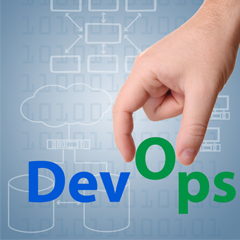Experience management is key to any industry. Understanding and managing ‘experience’ could be for external as well as internal stakeholders, but to a large extent experience management is focused primarily on the end consumer and more so in a B2C context.
To elaborate further, in the telecom industry, customer experience management (CEM) is the second most critical focus area after revenue assurance. in the hospitality industry, experience management, more popularly known as guest experience management, is the single most critical area and is mapped to the guest cycle (pre-arrival, arrival, occupancy, departure and now post departure as well).
In the travel industry, it becomes passenger experience management which is directly associated to top-line as well as bottom-line growth apart from operational efficiency like fleet management and optimization, asset management and predictive maintenance, etc. Similarly, in the healthcare industry, patient experience is key to customer acquisition, delight and retention.
The core principles of experience management are more or less the same for most industries, though the life-cycle, processes and data would be specific to the respective industries. Understanding the experience is not just a top-down approach mapped to the customer journey (across various consumer touch points) but also a bottom-up approach personalised for every customer across the customer life-cycle (per-acquisition, new, mature/ growing/ engaged and loyal).
In the healthcare industry, patient experience management is not just about the in-hospital experience, but research says that two-third of an individual’s interaction with a healthcare provider is as a customer, pre and post treatment. Only a third of their experience is as a patient during treatment and during the hospital stay. External data like brand reputation, sentiments, etc. would play an important role as much as the knowledge of the customer from the internal patient demography, patient treatment progress notes, billing information, etc. Experience of internal stakeholders like physicians, nurses and other supporting staff is also critical since it is directly correlated to patient experience.
While the in-hospital experience like waiting time, nursing care, choice of food, cleanliness and even parking, etc. is core to the patient experience, the provider selection is subject to awareness (diagnosis, doctors as key opinion leaders), access (choice of healthcare provider based on vicinity, insurance coverage, channels of reach, knowledge of availability of referenced doctors, treatment etc.) and transitions (communication with referring physician, follow-up visits, call backs for assistance, wellness services, etc.) are critical elements apart from online recommendations, buzz and sentiments that provide good reference during online search. People often choose their care providers after a lot of due diligence and influence by various stakeholders including referrals from professional as well as personal circles.
While the hospitals endeavour to optimise the length of stay (LoS) for every patient, they are also striving to provide custom and personalised experience. Some of them have already embarked on digital transformation journey including real-time patient health monitoring and measuring patient experience including waiting period monitoring using wearables like RFID wristbands, introductions of kiosks and mobile apps for self-service including doctor appointment booking, billing (optimised using simulation), choices in cuisines based of personalised diet recommendations and
allergies, etc.
As an example of a PEM initiative, a major hospital in Texas, US, developed custom hardware (custom remote control, pillow speakers, etc.) and software, integrated the same with customer mobile phones as well as in-room wall-mounted television sets to provide a seamless and personalised experience (including media experience) to the patients. The patients could view their individual schedule, order food, read messages, make calls, view media content specific to their diagnosis, review progress, provide real-time pain indication and notification to nurses who monitor the same on a dashboard among other services from either one of the input devices – custom remotes or mobile app. At the backend, multiple service providers were integrated to provide a seamless unified experience.
One of the ways of implementing a patient experience analytics platform to enable a PEM solution would be to create a data lake on a Big Data platform that would not only include standard information coming from traditional source systems like patient demographics including socio-economic state and health condition (including electronic health records), coverage (care programme, insurance, etc.), referral information (both external and internal), provider and practice details, department and staff details, facilities and rates, diagnosis and treatment facts, tests/cultures details and facts, etc., but also operational information about location and time spent by patients, feedback and survey inputs from patients/ visitors from traditional as well as social media and key websites, enquiry and appointment details, etc. This is apart from data coming from various sensors including medical instruments and wearable devices including patches that can track sensor enabled pills apart from recording patient rest and activity patterns.
Various patient experience views can then be created based on existing KPIs like patient foot fall/ admissions, outpatient/ inpatient ratio, admission turn over rate, net and average patient revenue, average length of stay/ patient days, bed occupancy rate, average procedure/ surgery count and length, etc. or newly suggested or defined experience management KPIs to provide a view of the micro as well as macro level customer experience – both at an individual as well as an aggregate level. For example, aggregate views like patient history, patient journey, etc. could be created to give a holistic view and personalised recommendations can be provided to individual customers based on their health status. Analytics models can then help to not only understand and suggest where changes need to be made to improve patient experience but they can also be built to predict key performance indicator (KPIs) like bed utilisation in coming weeks, months as well as to improve business efficiency by optimising assets and resources.
Cloud-based Big Data analytics platforms, enabling patient experience analytics and management, can help providers better understand the actual patient experience, the key driving factors for enriching the same and enable custom offerings and campaigns to the target patient groups for optimal reach and response with the overall aim to enhance the patient experience and satisfaction, at a fraction of a cost of in-house development.
There are quite a few digital healthcare companies which have already created and are offering solutions around wearable insights and patient monitoring, connected care, genomic and clinical data integration, telemedicine, content analytics (medical/ health records) and predictive personalised health analytics to name a few.
With progress being made in the healthcare industry towards enabling services like targeted treatment via integration of genomic and clinical data using big data, stem cell therapy and regeneration, 3D printing of body parts and organs, and successful robotic surgeries managed remotely (more of a reality than a concept that was being brainstormed a few decades ago) it is just a matter of time that artificial intelligence powered healthcare self service solutions and applications would evolve to enable and enrich patient experience management and drive even larger causes like helping fight and control any disease outbreak on a mass scale and perhaps go on to become the corner stone for humankind’s progress towards immortality!
Published By : Financial Express

Sreejit has over 22 years of IT experience in Digital and Analytics leadership roles. Having setup the Digital Analytics Practice for Happiest Minds, Sreejit currently reports into Happiest Minds Executive Board (2 CEOs) for Strategic Accounts and Alliance Leadership. He is responsible for developing Strategies, Leading Alliances & Partnerships, Sales, Solutions Development & creating Non Linear Revenue Growth, Account Mining, and People Management. Sreejit is a B.Tech in Computers, a PMI certified Project Management Professional and has completed an Executive Management Program in Sales and Marketing from the Indian Institute of Management, Lucknow.








